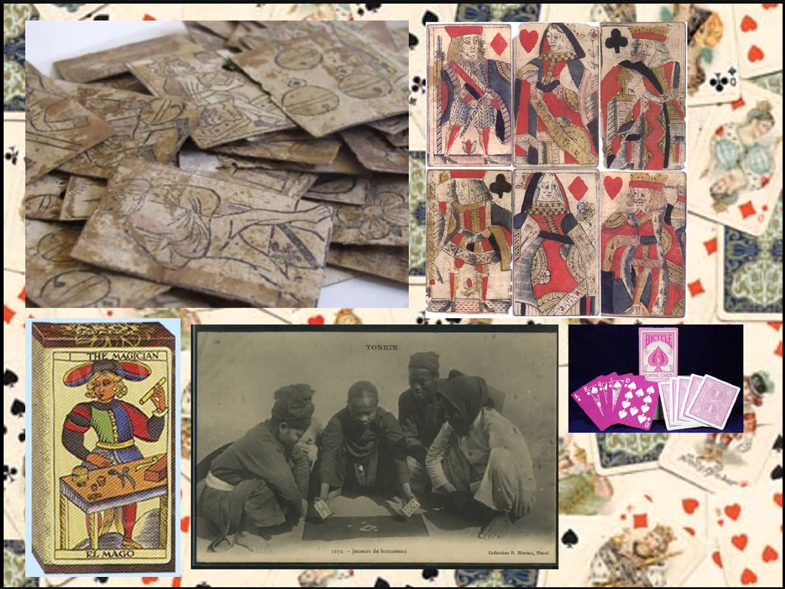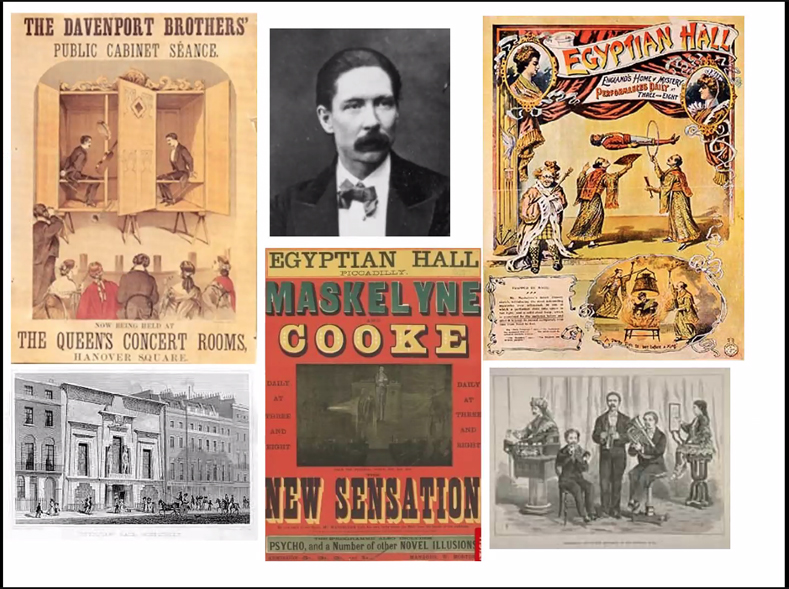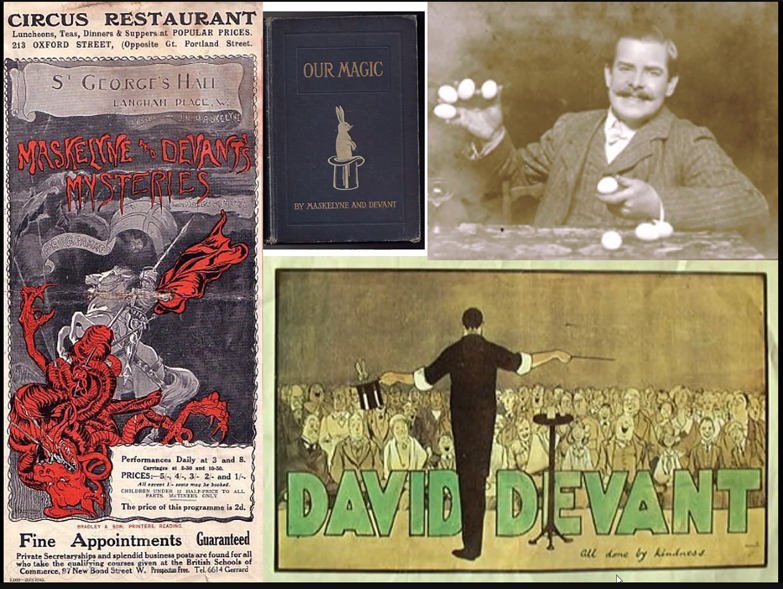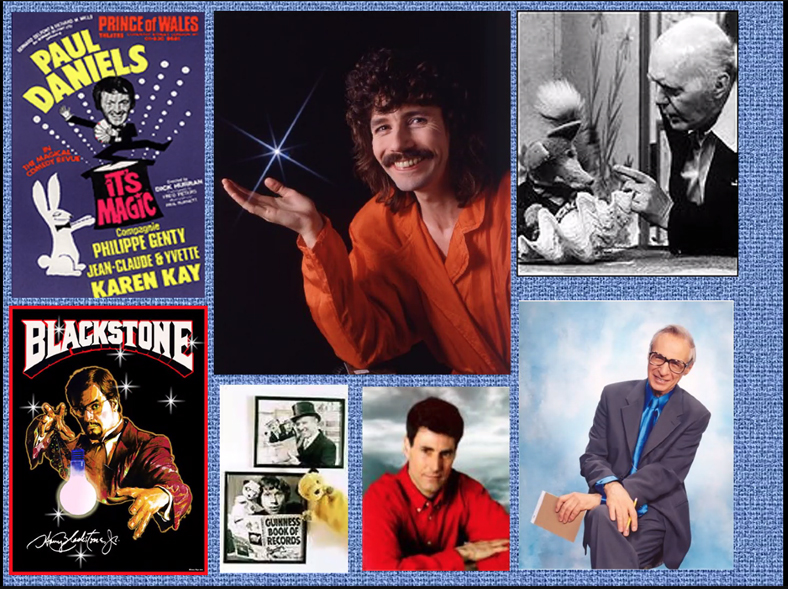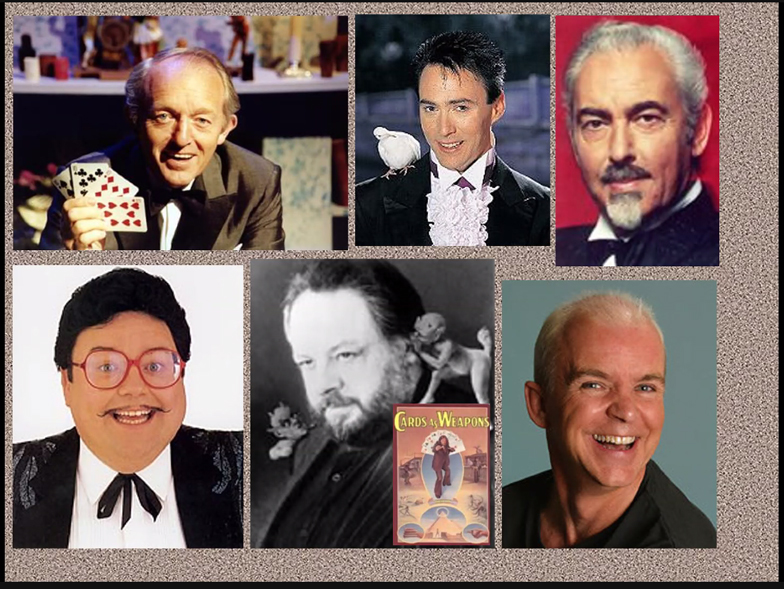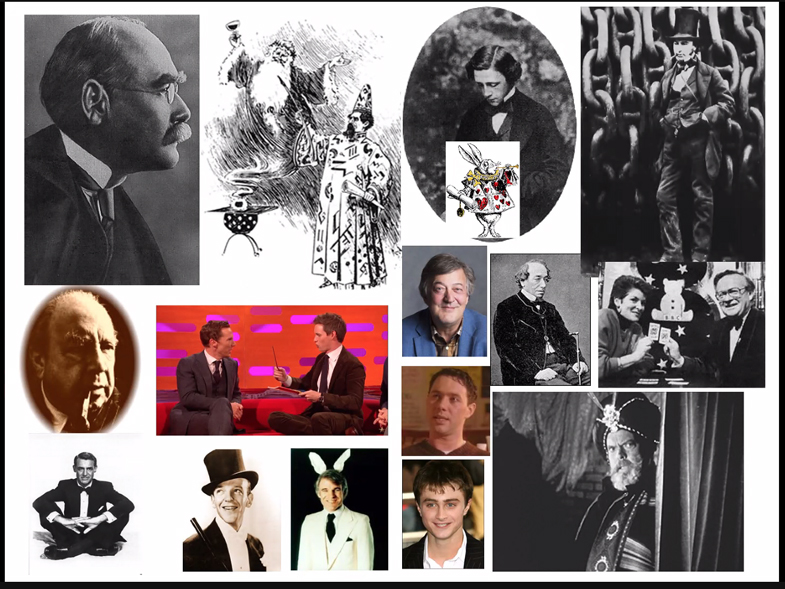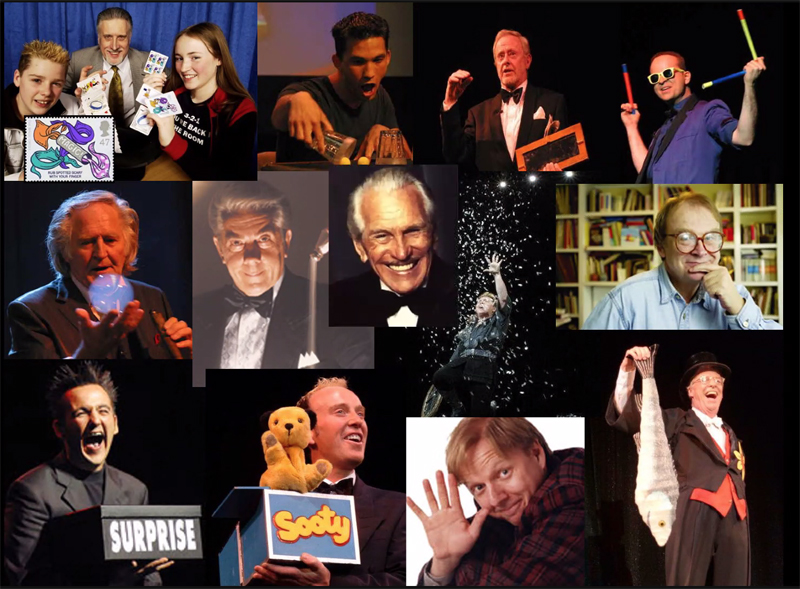The Modern Mystic League
JUNE 2021
Blackburn & District Society of Magicians

Our June meeting was the first (and, we hope, the last) Chairman’s Day to be held via Zoom – but it turned out to be none the worse for that. Unfortunately, we had competition from a beautiful summer’s day and an England football match, but most of our usual band of loyal followers tuned in.
Chairman Roger welcomed I.B.M. British Ring President Alan Maskell to take us on a Magical Mystery Tour, drawing together under that inspired title many strands from magic’s past to form a rich tapestry.
The oldest trick in the book is not, in fact, in a book at all, but to be found on the Westcar Papyrus, which details the doings of the ancient high priest Dedi. The oldest book mentioned was De Viribus Quantitatis of 1496, a precursor to Scot’s seminal tome, The Discoverie of Witchcraft of 1584, initially limited to just 500 copies. Alan showed us the title page from a later printing of 1651, pointing out the effects which are still with us today, such as Grandmother’s Necklace.
Next came Hocus Pocus Junior in 1634, accompanied by an image of Alan himself, playing the part of that iconic conjuror. Bartholomew Fair brought Isaac Fawkes and the news that Elizabeth I was shown a card trick in 1570. Her reaction is not recorded. This led to the topic of playing cards, tracing their history from their probable 14th century origins in China up to the recent production of a gender-neutral deck with the Jack, Queen and King being replaced by bronze, silver and gold.
Robert-Houdin, of course, got a mention, performing with the all-pervasive smell of ether; as did Anderson, the Wizard of the North, who pioneered extensive advertising, even having his image printed on pats of butter so that potential patrons could be made aware of him over breakfast.
The American line of the magic family encompassed Kellar, Thurston, Carter, Blackstone, Robinson (Chung Ling Soo), Lafayette, Houdini, Blackstone and, latterly, David Copperfield, Lance Burton, Penn and Teller, David Blaine and the Canadian Doug Henning. Throughout, Alan referenced books as sources of further information on these performers.
Spiritualism got a look-in with the Davenport Brothers and Joihn Nevil Maskelyne, who exposed them in Cheltenham in 1865 and went on to join Cooke at the Egyptian Hall. Devant was brought into the story at this point, along with St. George’s Hall.
Chairman Roger welcomed I.B.M. British Ring President Alan Maskell to take us on a Magical Mystery Tour, drawing together under that inspired title many strands from magic’s past to form a rich tapestry.
The oldest trick in the book is not, in fact, in a book at all, but to be found on the Westcar Papyrus, which details the doings of the ancient high priest Dedi. The oldest book mentioned was De Viribus Quantitatis of 1496, a precursor to Scot’s seminal tome, The Discoverie of Witchcraft of 1584, initially limited to just 500 copies. Alan showed us the title page from a later printing of 1651, pointing out the effects which are still with us today, such as Grandmother’s Necklace.
Next came Hocus Pocus Junior in 1634, accompanied by an image of Alan himself, playing the part of that iconic conjuror. Bartholomew Fair brought Isaac Fawkes and the news that Elizabeth I was shown a card trick in 1570. Her reaction is not recorded. This led to the topic of playing cards, tracing their history from their probable 14th century origins in China up to the recent production of a gender-neutral deck with the Jack, Queen and King being replaced by bronze, silver and gold.
Robert-Houdin, of course, got a mention, performing with the all-pervasive smell of ether; as did Anderson, the Wizard of the North, who pioneered extensive advertising, even having his image printed on pats of butter so that potential patrons could be made aware of him over breakfast.
The American line of the magic family encompassed Kellar, Thurston, Carter, Blackstone, Robinson (Chung Ling Soo), Lafayette, Houdini, Blackstone and, latterly, David Copperfield, Lance Burton, Penn and Teller, David Blaine and the Canadian Doug Henning. Throughout, Alan referenced books as sources of further information on these performers.
Spiritualism got a look-in with the Davenport Brothers and Joihn Nevil Maskelyne, who exposed them in Cheltenham in 1865 and went on to join Cooke at the Egyptian Hall. Devant was brought into the story at this point, along with St. George’s Hall.
CHAIRMAN'S DAY WITH ALAN MASKELL
One intriguing theme was magic hoaxes, such as the Indian Rope Trick and the possibility that the rabbit-from-the-hat motif came from Mary Toft’s claim to have given birth to a litter of bunnies.
British magicians did not miss out, with time being given to the likes of David Nixon, Johnny Hart, Geoffrey Durham, Wayne Dobson and Dynamo as well as some BGT successes. More historically, we heard of Selbit and his sawing; but not in half! He and his contemporaries have become topical again with the ‘sawing centenary’, as has Robert Harbin.
It is surprising how many magicians and tricks have been commemorated on stamps, and as another fascinating side issue Alan alluded to famous people who have had magic as a hobby, citing Disraeli, Dickens, Brunell and Orson Welles among others.
Passing reference was made to famous artworks, such as ‘The Conjuror’ from the Bosch school and Frith’s ‘Derby Day’ of 1893, depicting tricksters at the racecourse . . . and Alan even touched on the development of magic words, from Abracadabra and Hocus Pocus to Izzy Wizzy.
A final section dealt with the rise of magic clubs, beginning with the S.A.M.S in 1902 and focusing on The Magic Circle, founded on 1st July, 1905, when 23 like-minded individuals met at Pinoli’s restaurant in London.
All in all, we were treated to a brisk canter through the history of mystery, Alan blending encyclopaedic knowledge of his subject with technical expertise to create a first-rate PowerPoint presentation.
But there was more, as this was complemented in Part 2 by a quiz, some of which tested whether we had been listening attentively to Part 1. It was well crafted and illustrated and, above all, accessible to anyone with an interest in magic. There were 36 questions, all participants scoring over 20, with a top score of 27. Answers ranged from Terry Herbert to The Incredible Burt Wonderstone, from Richard Wiseman to Paloma Faith and from Samuel Pepys to Mr Benn.
It was a wonderfully relaxed and fun way to spend a summer’s afternoon, thanks to the charm and presentational skills of Alan Maskell, who was warmly thanked by President Allan on behalf of all the members present.
Brian Lead
British magicians did not miss out, with time being given to the likes of David Nixon, Johnny Hart, Geoffrey Durham, Wayne Dobson and Dynamo as well as some BGT successes. More historically, we heard of Selbit and his sawing; but not in half! He and his contemporaries have become topical again with the ‘sawing centenary’, as has Robert Harbin.
It is surprising how many magicians and tricks have been commemorated on stamps, and as another fascinating side issue Alan alluded to famous people who have had magic as a hobby, citing Disraeli, Dickens, Brunell and Orson Welles among others.
Passing reference was made to famous artworks, such as ‘The Conjuror’ from the Bosch school and Frith’s ‘Derby Day’ of 1893, depicting tricksters at the racecourse . . . and Alan even touched on the development of magic words, from Abracadabra and Hocus Pocus to Izzy Wizzy.
A final section dealt with the rise of magic clubs, beginning with the S.A.M.S in 1902 and focusing on The Magic Circle, founded on 1st July, 1905, when 23 like-minded individuals met at Pinoli’s restaurant in London.
All in all, we were treated to a brisk canter through the history of mystery, Alan blending encyclopaedic knowledge of his subject with technical expertise to create a first-rate PowerPoint presentation.
But there was more, as this was complemented in Part 2 by a quiz, some of which tested whether we had been listening attentively to Part 1. It was well crafted and illustrated and, above all, accessible to anyone with an interest in magic. There were 36 questions, all participants scoring over 20, with a top score of 27. Answers ranged from Terry Herbert to The Incredible Burt Wonderstone, from Richard Wiseman to Paloma Faith and from Samuel Pepys to Mr Benn.
It was a wonderfully relaxed and fun way to spend a summer’s afternoon, thanks to the charm and presentational skills of Alan Maskell, who was warmly thanked by President Allan on behalf of all the members present.
Brian Lead
